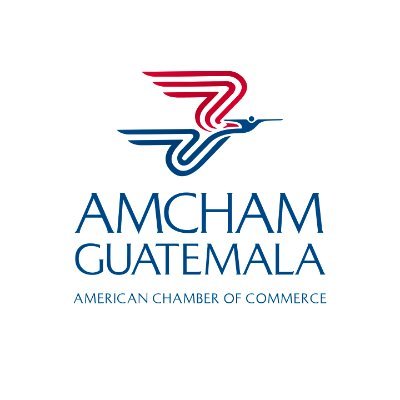
Michelle Wille
@DuckSwabber
Followers
5,243
Following
4,595
Media
1,789
Statuses
28,417
Avian influenza & avian virome ecology | "Expert in Ducks" - spam mail | "Walking encyclopedia for avian influenza" - CVdS | (she/her)
Melbourne, Victoria
Joined February 2014
Don't wanna be here?
Send us removal request.
Explore trending content on Musk Viewer
SEVENTEEN
• 1484737 Tweets
無料クーポン
• 169965 Tweets
DG X ORM KORNNAPHAT
• 99206 Tweets
連休明け
• 96747 Tweets
carat
• 81994 Tweets
अब्दुल कलाम
• 65344 Tweets
पूर्व राष्ट्रपति
• 45413 Tweets
アトラス彗星
• 43222 Tweets
FELIP TAKES ON BBPHSTAGE
• 30627 Tweets
JC BBPH MAINSTAGE
• 29822 Tweets
オーストラリア
• 28106 Tweets
ITZY WORLD IS STILL DIFFERENT
• 21415 Tweets
ミンギュ
• 18962 Tweets
金木犀の香り
• 17689 Tweets
#RokKłamstw
• 17651 Tweets
Mehmet Şimşek
• 17477 Tweets
JimmySea with PizzaMaru
• 17365 Tweets
うさぎだらけくじ
• 14635 Tweets
ジョシュア
• 13121 Tweets
スングァン
• 12713 Tweets
エスクプス
• 11914 Tweets
ドギョム
• 11464 Tweets
タワレコ
• 10280 Tweets
Last Seen Profiles
A whopping 304
#SARS_COV_2
#CODVID19
sequences from Australia are now available on
@nextstrain
- viruses from Australia are found in just about every clade showing a wide source of introductions! Incredible effort by all the labs involved
7
73
215
🚨 New paper out!
In this
#SciencePerspective
we outline the facets to the resurgence of H5N1.
Since Oct 2021 there have been >3000 outbreaks of avian influenza, with substantial poultry losses, mass mortality events in wild birds, and human cases.
4
92
188
Great to see this paper with
@DrSnygg
now out in
@WaterbirdsJourn
. Given the ever changing HPAI situation, its probably a bit out of date now, but gives a summary of events until ~July 2023.
👉
5
88
168
🚨 New paper out in
@PLOSPathogens
We aimed to understand genomic patterns of avian influenza in Australia - how the continent is connected to the global gene pool, virus importation onto the continent, and virus movement in Australia.
4
48
161
Did you know wild birds are hosts to at least 10 species of coronaviruses?
Our paper on coronaviruses in birds has been accepted. We evaluated virus ecology across hosts, disease propensity and porosity of the wild bird: poultry interface.
#WatchThisSpace
for more details soon!
6
37
138
Took a few years, but my final PhD paper (oops) is now out in
@Virus_Evolution
.
We wanted to understand what features of influenza allow it to reinfect a population of Mallards year after year.
Lineage replacement and reassortment are key features
👉
3
32
136
Now with over 1000(!!) sequences from Australia on GISAID following massive data dumps from VIC and NSW we can see that sequences from all states are scattered throughout the subsampled tree on
@nextstrain
. Large source of introductions. Amazing work by all labs involved!
6
42
121
🚨 Our latest study showing the role of host phylogeny (and ecological effects as previously shown) on host competency for avian influenza is finally out
@royalsociety
!
Culmination of MANY years of sampling to reveal avian influenza dynamics in Australia
👉
1
30
117
Incredibly pleased to have been awarded an
@arc_gov_au
DECRA!!!! Am very grateful to all the mentors and collaborators who have been invaluable along the way. Looking forward to more viruses and birds in my future!
22
13
118
Very concerning that HPAI has now reached the Southern tip of South America.
We wrote some recommendations last year in preparation of HPAI entering Antarctica. You can find them here:
Highly pathogenic avian
#influenza
detected in
#poultry
in Puerto Natales,
#Magallanes
Region (see map),
#Chile
. Now the virus has reached the southern tip of South America, it is only one step further to the
#Antarctic
and its abundant
#seabird
and marine mammal populations.
4
128
141
4
64
115
Finally time to share one of our papers, now out!
@MarsKlaassen
and I outline the plight of wild birds in the HPAI panzootic, and our concerns around the severe discrepancy in reporting of mortality data.
👉
1
46
113
🚨 new preprint
@RhysHParry
@Jemma_Geoghegan
@edwardcholmes
Think you know what an influenza virus is? We found 5 novel influenza viruses in fishes and amphibians: these viruses are probably found across all vertebrates, not just birds/mammals
8
53
109
Host phylogeny plays a key role in determining infectivity, virus loads, transmission. New study shows that host phylogeny also plays a role in virome scale transmission networks.
Great paper by Rebecca French
@edwardcholmes
and collaborators in NZ.
👉
3
35
99
Our manuscript about the viromes of Antarctic Penguins and their ticks is now out on bioRxiv with
@edwardcholmes
.
We found 107 viral species associated with penguins, their diet, microbiome and Ixodes uriae ticks.
1
34
96
Great resource from the
@_BTO
on impacts, planning for future outbreaks, and conservation and research priorities in regards to HPAI
👉
2
48
91
Lovely analysis demonstrating bidirectional movement of HPAI H5N8 avian influenza viruses between Europe and Asia. Specifically that temporal estimates from virology data match bird migration timing. Featuring
@EvolveDotZoo
@jnaraghwani
@Hill_SarahC
👉
2
22
88
You'll find me at poster 670 today if you want to chat all things avian influenza , including more about the which will be in Canada June 2025!
@options2024
#options24
1
9
85
🚨 And out now!
Check out paper about influenza viruses in fish and amphibians - no longer only viruses of humans and production animals, rather likely to have co-evolved with vertebrates!
w
@edwardcholmes
@Jemma_Geoghegan
@RhysHParry
@_OliviaTurnbull
5
27
81
🚨 New paper out
The highest risk period for HPAI incursion into Australia is when the migratory birds arrive in the spring. Here
@MarsKlaassen
and I report the results of our surveillance of migratory birds from Sept-Dec 2022. No HPAI detected.
👉
1
24
79
While the biggest impact has been on pinnipeds, and dairy cattle are all the rage currently, this graph really demonstrates the diversity of mammals which have been infected with HPAI to date. Detailed data in the
@EFSA_EU
quarterly reports.
2
32
78
Detailed study of influenza movement with wild birds, particularly revisiting the recent introduction into North America via the Atlantic shows the importance of bird migration via the arctic and subarctic. Great study by
@Nichola_HillTop
et al.
👉
2
39
79
Last year we wrote a review on the diversity and abundance of coronaviruses in wild birds which won the best article in FEMS!
Paper here:
Link to interview below.
We interviewed Dr Michelle Wille (
@DuckSwabber
) and Prof Edward Holmes (
@edwardcholmes
) the WINNERS of the best
#ArticleAward
from
#FEMSMicrobiolRev
for 2020 🎤
Many congratulations to both! Read the interview 👇
0
10
24
2
15
78
Interested in viruses of Antarctic penguins?
We have a new paper out!
“Sustained RNA virome diversity in Antarctic penguins and their ticks”
with
@edwardcholmes
Erin, Mang, Daniel and Aeron
1/4
2
31
73



























































































































